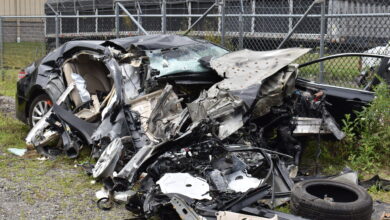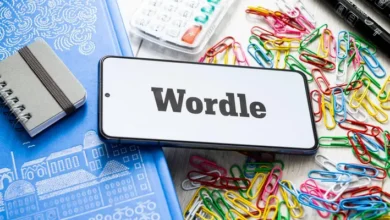Comprehensive Guide to Efficient Junk Removal

Introduction to Junk Removal
In today’s fast-paced world, junk removal has become an essential service for both residential and commercial properties. Efficient junk removal not only helps in maintaining cleanliness but also promotes a healthier environment. This comprehensive guide delves into the various aspects of junk removal, providing detailed insights on how to manage, reduce, and dispose of unwanted items effectively.
Understanding the Importance of Junk Removal
Junk removal is critical for several reasons. It helps in decluttering spaces, ensuring that living and working environments are clean and organized. A clutter-free environment reduces stress, improves productivity, and enhances the overall quality of life. Moreover, proper junk disposal is vital for environmental conservation, as it minimizes pollution and promotes recycling.
Health Benefits
Accumulated junk can become a breeding ground for pests and mold, which can lead to various health issues such as allergies, respiratory problems, and infections. By removing junk regularly, you can prevent these health hazards and maintain a safe and healthy living space.
Environmental Impact
Proper junk removal and disposal play a significant role in protecting the environment. Many items that end up as junk, such as electronics, batteries, and chemicals, can release harmful substances into the soil and water if not disposed of correctly. Recycling and proper disposal of these items help in reducing the carbon footprint and conserving natural resources.
Types of Junk
Understanding the different types of junk is crucial for effective removal and disposal. Junk can be categorized into several types, each requiring specific handling and disposal methods.
Household Junk
Household junk includes items such as old furniture, appliances, clothes, toys, and miscellaneous household items that are no longer needed. These items can often be donated, recycled, or disposed of through local waste management services.
Electronic Waste (E-Waste)
E-waste consists of discarded electronic devices such as computers, televisions, smartphones, and batteries. Due to the presence of hazardous materials, e-waste needs to be disposed of through specialized recycling programs to prevent environmental contamination.
Construction Debris
Construction debris includes materials such as concrete, wood, metal, and drywall from renovation or construction projects. These materials can often be recycled or repurposed, reducing the amount of waste that ends up in landfills.
Yard Waste
Yard waste comprises organic materials such as leaves, grass clippings, branches, and other garden debris. Composting is an effective way to dispose of yard waste, turning it into nutrient-rich soil for gardens.
Hazardous Waste
Hazardous waste includes items such as chemicals, paints, batteries, and other materials that are harmful to health and the environment. These items require special handling and disposal through hazardous waste collection programs.
Steps for Efficient Junk Removal
Efficient junk removal involves a systematic approach to ensure that all unwanted items are disposed of properly. Here are the steps to follow for effective junk removal:
1. Assessment and Planning
Begin by assessing the amount and type of junk that needs to be removed. Create a plan that outlines the items to be disposed of, donated, or recycled. This step helps in organizing the process and ensures that nothing is overlooked.
2. Sorting and Segregation
Sort the junk into different categories such as recyclables, donations, and disposables. Segregating the items makes it easier to manage and dispose of them appropriately.
3. Disposal Options
Identify the best disposal options for each category of junk. Research local recycling centers, donation facilities, and waste management services that can handle the specific types of junk you have.
4. Hiring Professional Services
For large-scale junk removal or items that require special handling, consider hiring professional junk removal services. These services have the expertise and equipment to handle various types of junk efficiently and safely.
5. Recycling and Donation
Whenever possible, recycle items such as paper, plastic, glass, and metal. Donate usable items to local charities or thrift stores. Recycling and donating not only help in reducing waste but also support community initiatives.
6. Safe Disposal of Hazardous Waste
Ensure that hazardous waste is disposed of through appropriate channels. Contact local hazardous waste collection programs to find out the best way to dispose of these items.
Choosing the Right Junk Removal Service
Selecting a reliable junk removal service is crucial for efficient and safe junk disposal. Here are some factors to consider when choosing a junk removal service:
1. Reputation and Reviews
Check the reputation and reviews of the junk removal service. Look for feedback from previous customers to ensure that the service is reliable and professional.
2. Services Offered
Ensure that the junk removal service offers the specific services you need, such as e-waste disposal, hazardous waste handling, and large-item removal.
3. Pricing
Compare the pricing of different junk removal services. Look for transparent pricing with no hidden charges. Some services offer free estimates, which can help in budgeting.
4. Licensing and Insurance
Verify that the junk removal service is licensed and insured. This ensures that the service complies with local regulations and provides coverage in case of any damages or accidents.
5. Environmental Practices
Choose a junk removal service that follows eco-friendly practices. Services that prioritize recycling and proper disposal of waste contribute to environmental conservation.
DIY Junk Removal Tips
If you prefer to handle junk removal yourself, here are some tips to make the process easier and more efficient:
1. Use Proper Equipment
Ensure you have the right equipment such as gloves, masks, and tools for lifting and moving heavy items. Using proper equipment prevents injuries and makes the process safer.
2. Plan Ahead
Plan the junk removal process in advance. Set aside time for sorting, segregating, and disposing of the junk. Having a clear plan helps in managing time effectively.
3. Rent a Dumpster
For large amounts of junk, consider renting a dumpster. This provides a convenient way to dispose of large volumes of waste without multiple trips to the landfill.
4. Recycle and Donate
Identify items that can be recycled or donated. Separate these items and take them to the appropriate facilities. Recycling and donating reduce the amount of waste that goes to landfills.
5. Follow Local Regulations
Ensure that you follow local regulations for junk disposal. Some items may have specific disposal requirements, and adhering to these regulations prevents legal issues.
Conclusion
Efficient junk removal is essential for maintaining clean and organized spaces, promoting health and safety, and protecting the environment. By understanding the different types of junk, following a systematic removal process, and choosing the right disposal options, you can manage junk effectively. Whether you opt for professional services or a DIY approach, prioritizing recycling and proper disposal contributes to a sustainable future.



